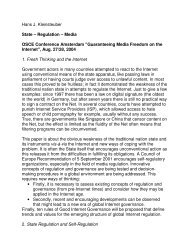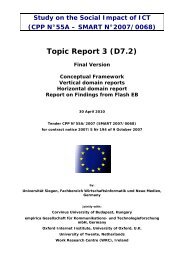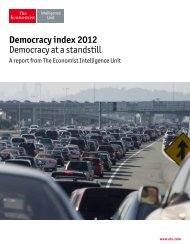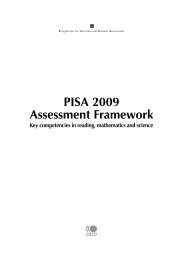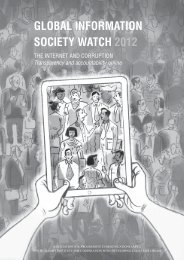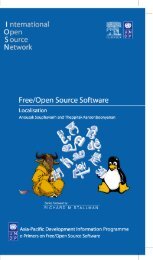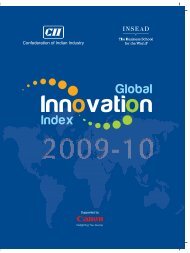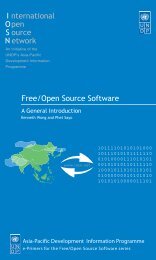Digital Activism Survey Report 2009
Digital Activism Survey Report 2009
Digital Activism Survey Report 2009
Create successful ePaper yourself
Turn your PDF publications into a flip-book with our unique Google optimized e-Paper software.
"""""""""""""""""""""""""""""""""""""""""""""""""""""""""""""""""""""""""""""""""""""""""""""""""""""""""""""""""""""""""""""""""""""""""""""""""" above: respondents’ personal definitions of digital activism<br />
Key Findings<br />
Age: Of the survey’s 122 respondents, 28% were between the ages of 26 and 30, with 10% above age 50<br />
and only 2% below the age of 20. The low activism rates of these young “digital natives” may be<br />
explained by political apathy and entertainment preferences online.<br />
Gender: Outside North America, male respondents outnumbered female respondents by a margin of 7 to<br />
3. If this gap holds true for digital activists in general, this further challenges the gender-neutral identity of<br />
technology.<br />
Geography: Geographic representation was largely consistent with global Internet access but should not<br />
be used as representative of the true distribution of digital activists around the world.<br />
Economics: <strong>Digital</strong> activists, particularly in developing countries, are much more likely than the population<br />
at large to pay a monthly subscription fee to have Internet at home, to be able to afford a high-speed<br />
connection, and to work in a white-collar job where Internet is also available. In short, digital activists are<br />
likely to be prosperous.<br />
Access: Intensity of use, rather than simple access, is critical as to whether or not a person is a digital<br />
activist. This high use is only possible for people with the ability to pay for it. The Internet may be<br />
2



